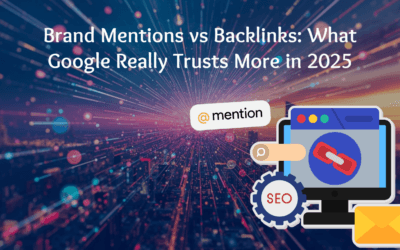Table of Contents
Introduction
In the fast-paced world of digital content marketing strategy, staying relevant isn’t just recommended—it’s essential. Whether you’re running a blog, managing an eCommerce site, or optimizing a company website, SEO success in 2025 heavily depends on how you treat your existing content. That brings us to one of the most crucial content marketing strategy debates: content refresh vs. content rewrite.
Which one delivers better results? Should you tweak existing content or start from scratch? In this post, we’ll explore the differences, advantages, and SEO benefits of both approaches—and help you choose the right path.
What is Content Refresh?
A content refresh involves updating existing posts with new data, links, images, and relevant keywords. It keeps the core of the content intact while improving it for SEO and user experience.
✅ You keep the same URL
✅ You enhance readability
✅ You update outdated stats and internal links
✅ You improve meta tags and structure
Incorporating the latest content marketing trends during a refresh ensures your blog stays relevant in SERPs and aligned with what your audience is searching for.
What is Content Rewrite?
A content rewrite involves starting over. It means reworking the structure, tone, information, and sometimes even the format of the content from the ground up.
✅ Useful when content is underperforming
✅ Ideal for outdated or low-quality blogs
✅ Best when you’re targeting a completely new keyword or audience
✅ Great for aligning content with your refreshed content marketing strategy

SEO Best Practices in 2025: Which to Choose?
✅Your content is already indexed and getting traffic
The page has high authority or backlinks
Your goal is to climb from page 2 to page 1
✅The post ranks poorly or not at all
The topic has changed dramatically
It doesn’t reflect your brand voice or expertise website.
When to Refresh vs. When to Rewrite
Here’s a breakdown to help you decide:
| Scenario | Refresh | Rewrite |
|---|---|---|
| Content ranks on page 1–2 but needs better engagement | ✅ Yes | ❌ No |
| Content is 2+ years old with outdated data | ✅ Yes | ❌ No |
| Content never ranked or drives zero traffic | ❌ No | ✅ Yes |
| Target keyword has changed significantly | ❌ No | ✅ Yes |
| Structure, tone, and value are outdated | ❌ No | ✅ Yes |
Benefits of Content Refreshing
- SEO Boost: A simple refresh can signal search engines that your page is active.
- Saves Time: You build on what’s already there.
- Preserves Backlinks: Avoid losing valuable link juice.
- **Aligns with Modern content marketing tools: Updating your content using new tools helps maintain consistency and quality.
AI Tools to Support Your Content Update Workflow
Leverage these content marketing tools to streamline your refresh or rewrite process:
- Surfer SEO – for keyword optimization and SERP analysis
- Jasper AI – to generate high-quality rewrite drafts
- Grammarly – for tone, grammar, and readability checks
- Frase – for content briefs and competitive insights
- Google Search Console – to identify pages with traffic drops
Advantages of Rewriting Content
- Total SEO Recalibration: Rewrite to target new keywords or audiences.
- Modern Relevance: Rewrite outdated content to match 2025 content marketing trends.
- Enhanced Readability: Update the structure to meet today’s reader expectations.
- AI Optimization: Use the best AI content rewriter tools to speed up the process while maintaining originality.
How to Decide the Best Approach
Ask yourself:
- Is the post still getting traffic?
- Does the content align with current social media content marketing strategies?
- Are the keywords and search intent still relevant?
- How is the user engagement (bounce rate, time on page, CTR)?
If the answer to most of the above is “yes,” a content refresh is likely enough. If not, you might need a full rewrite.
Future-Proofing Your Content Strategy for 2025
In 2025 and beyond, AI will continue playing a key role in content marketing tools. Brands leveraging AI for content refresh or content rewrites will benefit from faster turnaround times, better keyword optimization, and improved user targeting.
But no matter how advanced the tech becomes, strategy still matters. Whether refreshing or rewriting, ensure each piece of content aligns with your broader content marketing strategy and delivers genuine value to your audience.
Final Thoughts
There’s no one-size-fits-all answer. Both content refresh and rewrite have their place in a smart SEO and content marketing strategy. The key is to evaluate each piece of content individually and determine what will make it perform better in 2025’s competitive digital environment.
Let AI tools assist you, but let data and intent guide you.
Stay updated with SunBPO Solutions for the latest trends, insights, and strategies to keep your business ahead of the curve!
Frequently Asked Questions (FAQs)
What is the difference between content refresh and content rewrite?
A content refresh involves updating existing content with new information or formatting, while a content rewrite means completely reworking the content to align with new strategies or SEO goals.
Which is better for SEO in 2025—refreshing or rewriting content?
Both strategies work depending on the situation. For evergreen content, a refresh is ideal. For outdated or underperforming content, a complete rewrite often yields better SEO results.
How often should I refresh my website content?
It’s recommended to review and refresh key pages at least every 6–12 months based on analytics, traffic drops, or SEO performance.





0 Comments